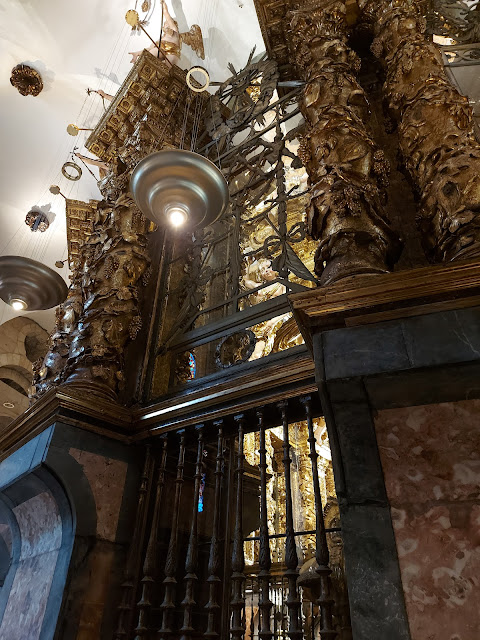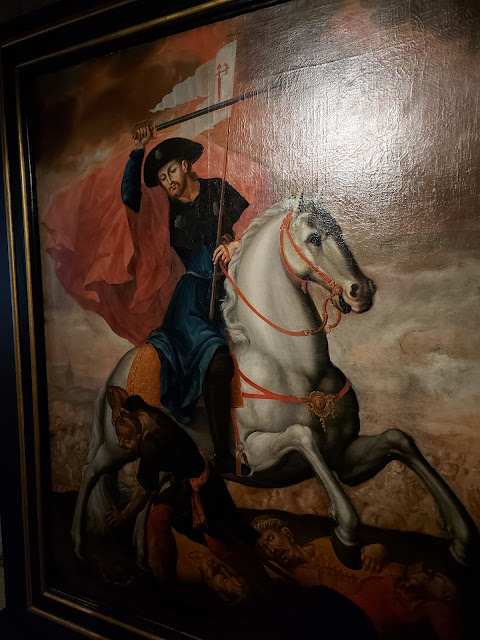 |
| Santiago de Compostela is the capital of Galicia and the end of the Way of St. James pilgrimage route. |
 |
| There is a very nice Parador in the center of town. |
 |
| The Santiago de Compostela Cathedral houses the tomb of the apostle James. |
 |
| Saint James the Great is said to have brought Christianity to Spain. |
 |
| His burial place in Galicia was allegedly rediscovered by Pelagius the Hermit in 814. |
 |
| King Alfonso II of Asturias and Galicia conducted a pilgrimage to the site and ordered the construction of a chapel there. |
 |
| The King of Leon built a larger church at the site, but it was destroyed in the 10th century by Al-Andalus. |
 |
| Construction on the cathedral that stands today started in 1075 by order of the King of Castile. |
 |
| After the Reconquista was complete, Pope Alexander VI declared the Way of Saint James one of the three official pilgrimage routes of Christendom. |
 |
| An offering from 1704 |
 |
| A banner from the Battle of Lepanto. |
 |
| These people are celebrating finishing their pilgrimages. Fireworks could be heard going off around the city throughout the day. |
 |
| A lion head from the 13th century |
 |
| It is estimated over 200,000 pilgrims hike the Way of Saint James each year. |
 |
| Death by giant sword |



No comments:
Post a Comment